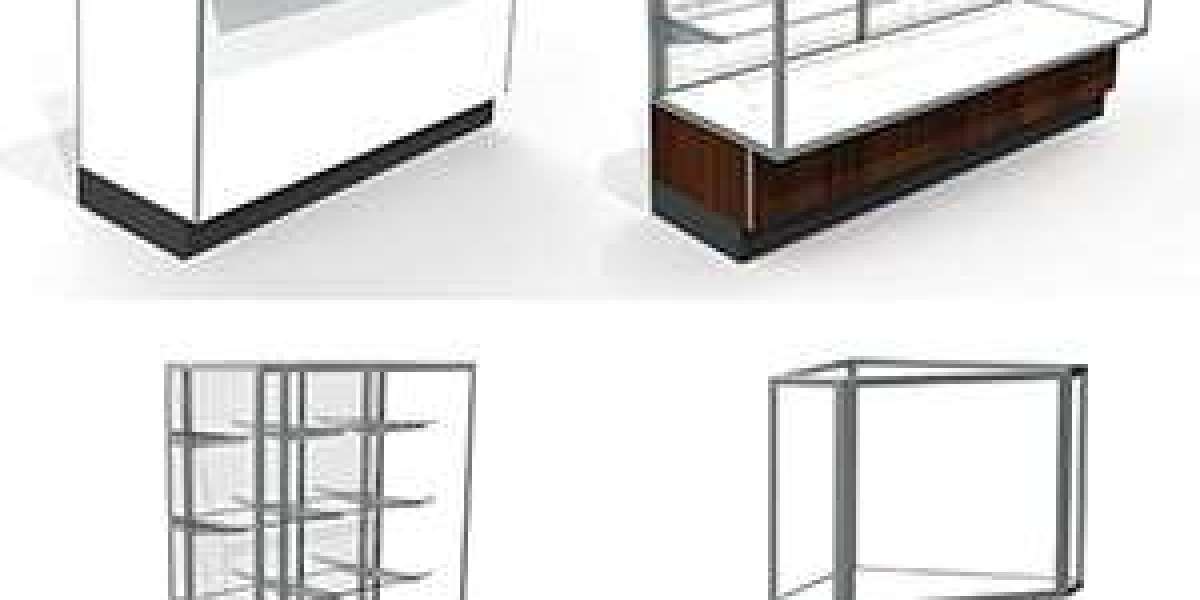Retail store displays are a critical element in any retail business's visual merchandising strategy. They are designed to captivate shoppers' attention and enhance their in-store experience. These displays are carefully crafted to showcase products most appealingly, highlighting new arrivals, best-sellers, or promotional items to stimulate interest and encourage purchases.
The effectiveness of retail store displays lies in their ability to communicate the brand's message visually and create an immersive environment that will resonate with the target audience. This can involve thematic elements that coincide with seasonal events, innovative use of lighting, or interactive components that engage customers more deeply with the product.
Moreover, well-designed store displays can guide customer flow through the store, strategically leading them past key products and promotions. This not only maximizes the exposure of featured items but also optimizes the overall shopping experience, potentially increasing the average time spent in the store and the total sales per customer.
When it comes to retail, first impressions are crucial. An effective retail display not only captures attention but also enhances the customer experience, promotes sales and reinforces the store's brand identity. Choosing the right display can be daunting, given the myriad of options and considerations involved. This blog post provides a comprehensive checklist to help you select the most effective retail displays for your business.
Understand Your Audience
Before making display choices, it's essential to understand your customers. What are their preferences and buying habits, and what kind of experience are they looking for in your store? Knowing your audience helps you tailor your retail displays to their tastes and needs, ensuring that they find your displays appealing and relevant.
Define Your Goals
What do you want to achieve with your retail displays? Are you looking to promote a new product, increase impulse purchases, or perhaps highlight seasonal items? Clear goals will guide your display strategy, helping you choose displays that align with your objectives. Whether it's driving sales for specific products or enhancing overall store aesthetics, your goals should dictate your choices.
Consider Your Space
Evaluate the available space in your store. The size and layout of your retail environment will significantly influence the type of displays you can use. Freestanding displays, wall-mounted shelves, and end caps all serve different purposes and fit different spaces. Ensure the displays you choose to optimize your space without cluttering it, allowing easy movement and a pleasant shopping experience.
Select the Right Materials
The material of your retail displays will affect both their look and durability. Common materials include wood, metal, glass, and acrylic, each offering different aesthetic appeals and functional benefits. For example, high-end boutiques might opt for sleek glass or acrylic, while a rustic store could prefer natural wood. Consider the durability, maintenance, and the aesthetic each material provides.
Focus on Flexibility and Scalability
Retail trends and product lines change frequently. Displays that offer flexibility in terms of adjustability and scalability can be a wise investment. Modular displays that can be easily reconfigured or expanded allow you to adapt to changing inventory and merchandising needs without requiring complete overhauls.
Evaluate Display Functionality
Functionality should never be sacrificed for style. Your displays should be attractive and functional, making it easy for customers to interact with the products. Ensure that items are accessible, that the display can hold the weight of the products, and that it doesn't require excessive maintenance or complicated assembly.
Lighting Is Key
Good lighting can make or break a display. It highlights the products, enhances their appeal, and contributes to the overall ambiance of the store. Consider different lighting options, such as spotlighting, ambient lighting, or LED accents, to create the desired mood and focus on your displays.
Consider Brand Consistency
Your retail displays should reflect and reinforce your brand identity. Choose colors, designs, and materials that align with your brand's aesthetic and values. Consistent branding across all displays helps strengthen brand recognition and fosters a cohesive shopping experience.
Budget Appropriately
Budgeting appropriately for retail displays is crucial for maximizing return on investment while enhancing the shopping experience. Allocate funds based on the display's strategic importance and expected revenue generation. Consider cost-effective materials and modular designs that can be easily updated or repurposed. Investing in high-impact areas like window displays or checkout counters can drive significant sales increases. Regularly review and adjust the budget to reflect sales data and consumer feedback, ensuring that your display strategy remains both dynamic and financially sustainable.
Conclusion
Selecting the right retail displays involves balancing aesthetic appeal, functionality, and cost-effectiveness. By following this checklist, you can ensure that your displays not only attract attention but also contribute to a positive and memorable shopping experience. Effective displays are more than just fixtures; they are essential tools in building customer relationships and driving sales. Always remember that the ultimate goal is to create an environment where both the customer and the business can thrive.








